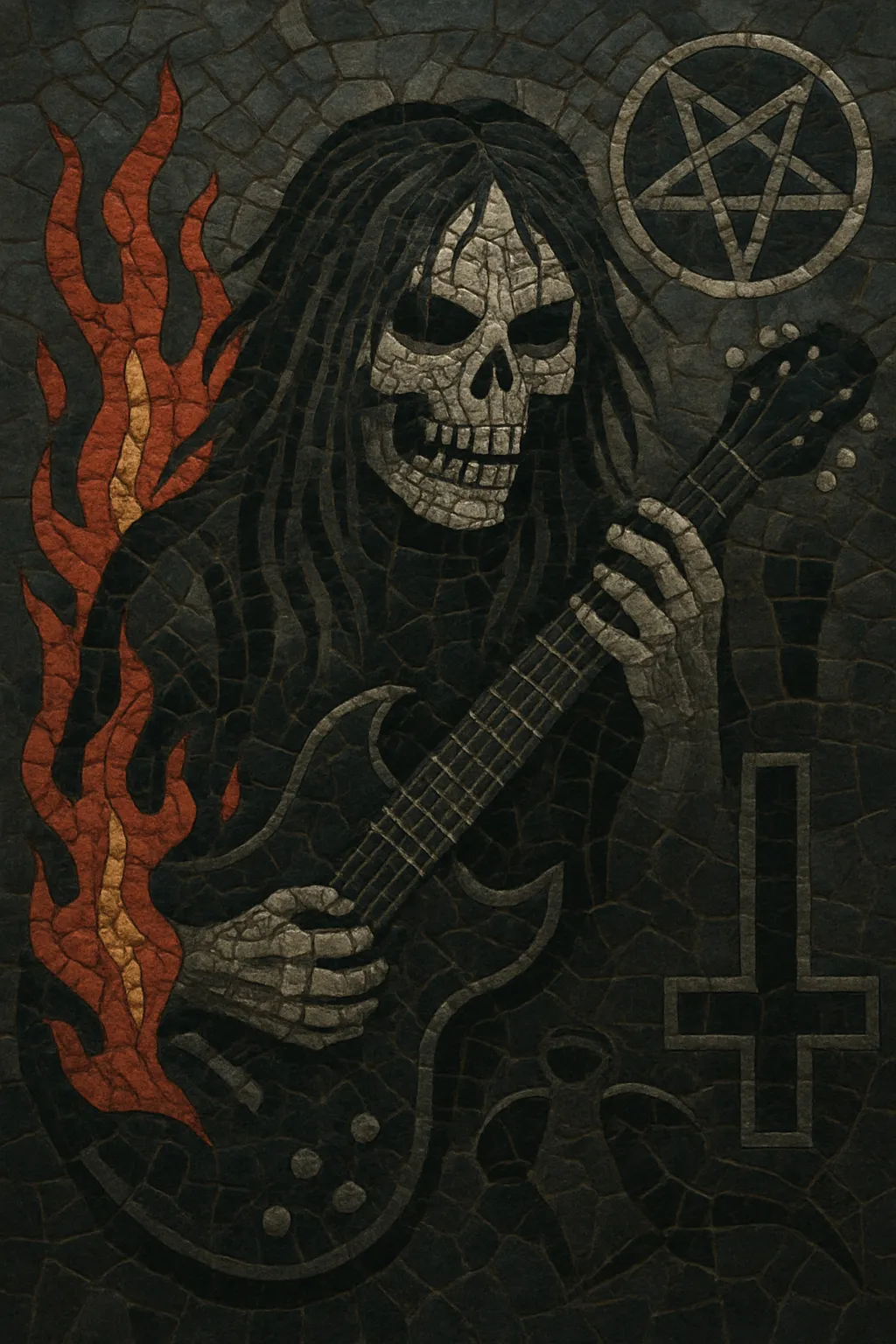Black 'n' roll is a hybrid of second-wave black metal aesthetics and the swagger, groove, and hooks of classic rock and roll and hard rock.
It keeps black metal’s rasped vocals, minor-key riffing, and grim atmosphere, but replaces relentless blast beats with mid-tempo 4/4 stomps, d-beat and punk-derived grooves, and blues-tinged, pentatonic-leaning guitar licks. Songs are more verse–chorus oriented, riffs are simpler and more driving, and production often favors a raw, overdriven, garage-like bite rather than cavernous ambience.
Lyrically and visually it blends misanthropy, occult and nocturnal themes with biker/bar-room attitude and sleaze, yielding a sound that feels both menacing and fist-pumping.
Early black metal progenitors such as Venom and Bathory drew heavily on the drive of classic rock and roll and Motörhead-style speed metal, planting the seeds for a more rocking strain of extremity. Through the 1990s, Scandinavian second-wave black metal codified the genre’s sound, while some bands occasionally flirted with punk rhythms and rock riffs without fully departing from traditional black metal structures.
The label “black ’n’ roll” gained traction in the mid-2000s as several Norwegian bands steered black metal’s attitude toward hook-forward, groove-based songwriting. Darkthrone’s pivot on albums like The Cult Is Alive (2006) and F.O.A.D. (2007) embraced crust-punk propulsion and rock and roll riffing under a blackened veneer. Satyricon’s streamlined, riff-centric era (e.g., Now, Diabolical, 2006) and the formation of groups such as Khold and Vreid further clarified the template: harsh vocals and sinister tonality delivered with swinging beats, chunky riffs, and memorable choruses.
Kvelertak’s self-titled 2010 debut pushed black ’n’ roll into broader rock and metal consciousness by fusing blackened vocals with exuberant classic-rock guitar work and punk energy. Concurrently, U.S. acts like Midnight and various Scandinavian projects kept the sound raw and underground, emphasizing leather-and-spikes aesthetics and high-energy live shows. Today, black ’n’ roll remains a cult-favorite flavor within extreme metal, prized for injecting immediacy and swagger into black metal’s darkness without abandoning its abrasive edge.


